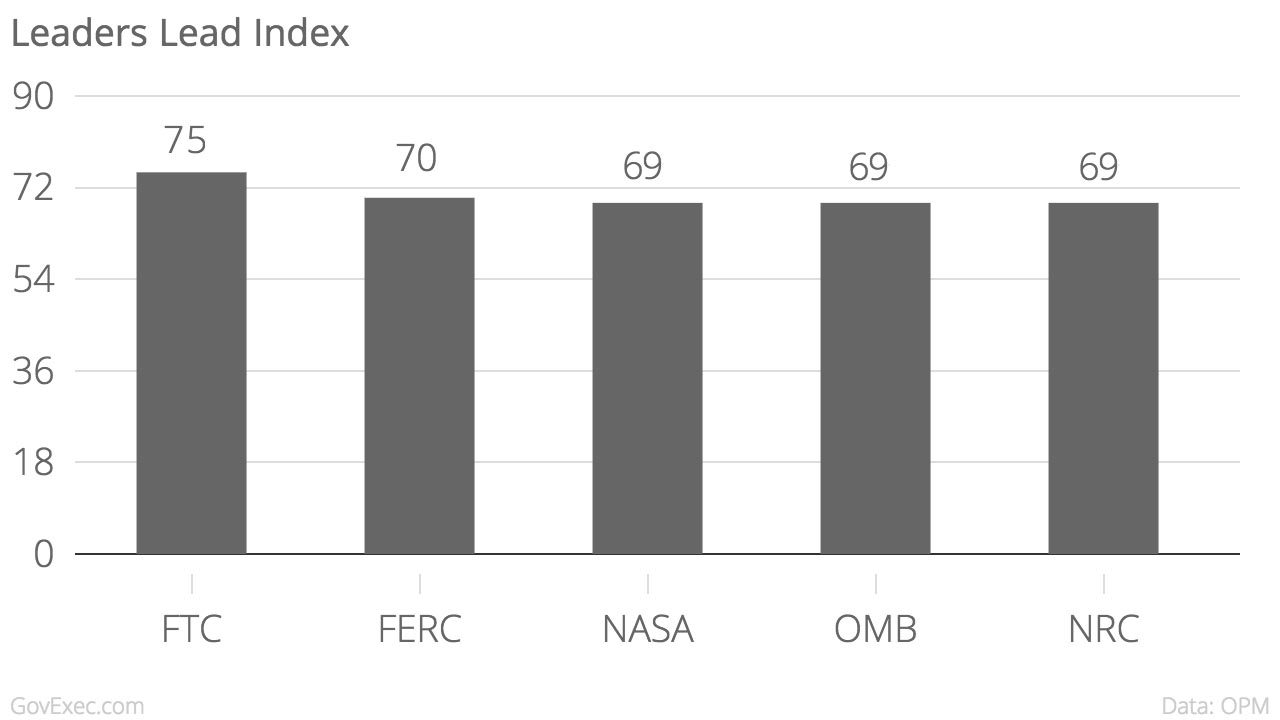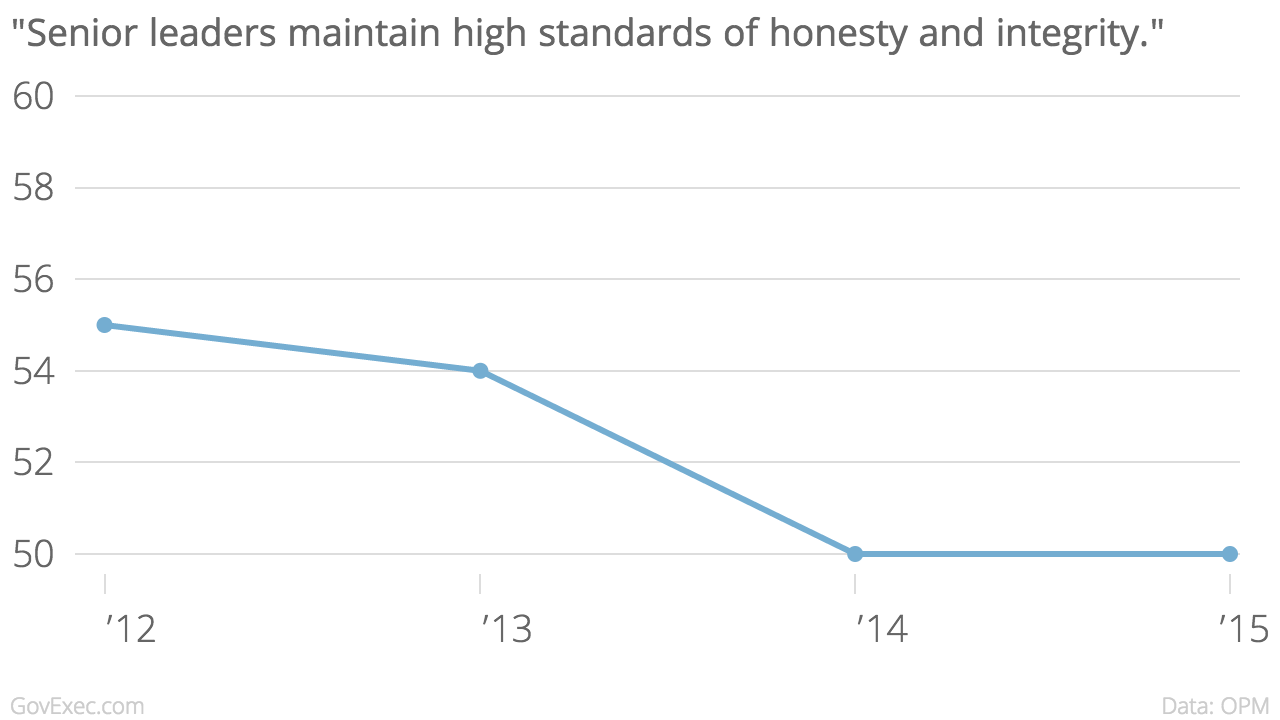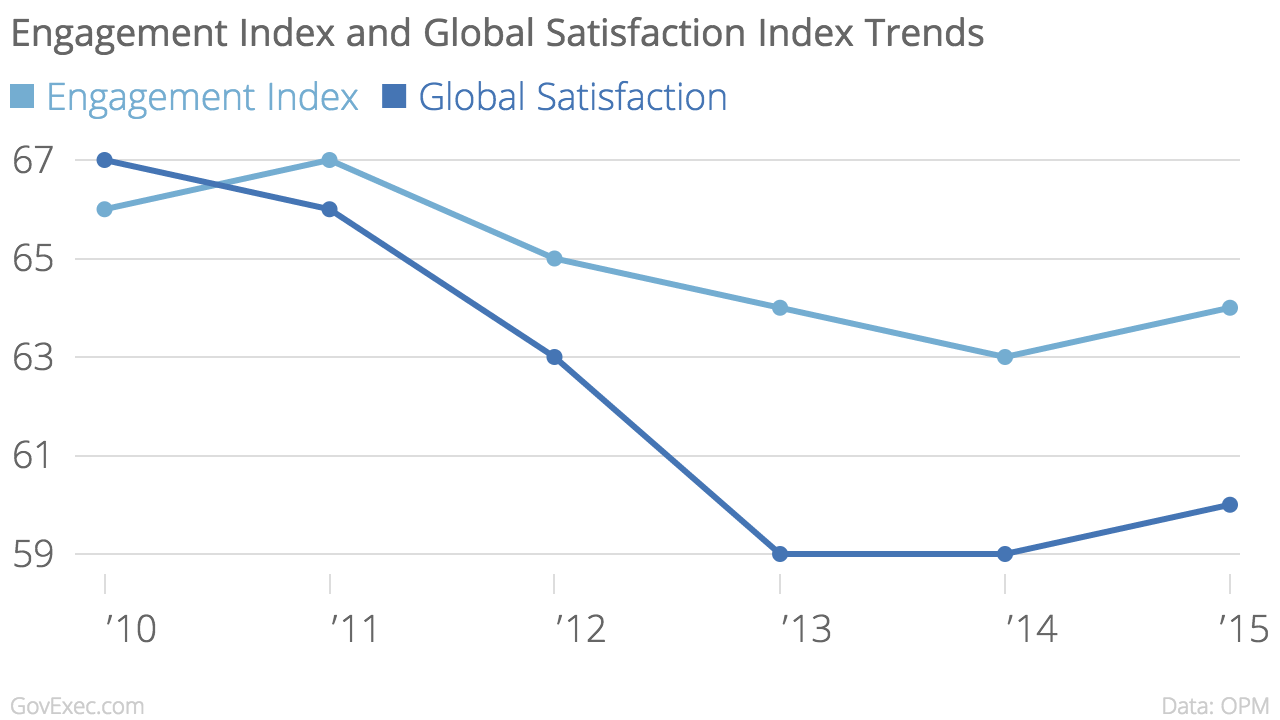
Minerva Studio / Shutterstock.com
Feds Are Happier At Work, But They’re Still Wary of Leadership
Employees are more engaged in their jobs, but faith in top management has decreased three percent since 2012, according to new viewpoint survey.
Federal employees reported slightly more faith overall in their agency’s leadership in 2015 compared to 2014, but trust in top officials is still shaky and the trend is worrisome, according to the latest data from the annual employee viewpoint survey.
“The leadership component of the employee engagement index has historically and consistently been low, and generally tended downward over the years, although it did improve by 1 percent this year,” said Beth Cobert, acting director of the Office of Personnel Management during a phone call with reporters on Tuesday to discuss the survey. Leadership scores – which measure employees’ views on leaders’ integrity and ability to communicate with and motivate the workforce – varied widely across the 82 federal agencies that responded to the 2015 Federal Employee Viewpoint Survey, which OPM released in full on Tuesday.
For example, in the “leaders lead” category of the employee engagement index, 75 percent of respondents from the Federal Trade Commission expressed faith and trust in their leaders – the highest of any agency included in the 2015 survey. The Homeland Security Department had the lowest score in this category (38 percent).

“This highlights the need for tailored solutions to respond to each agency’s unique challenges,” said Cobert. OPM has created an internal dashboard of survey data – Unlocktalent.gov -- for federal managers to help them drill down into the results from their agencies to improve where needed. This year, OPM is providing an “even broader audience the FEVS results” through the dashboard, Cobert said. Members of the public and the media can't access the more granular information related to many sub-agencies within larger parent departments, said Jonathan Foley, OPM’s director of planning and policy analysis. But they can access some of the same general information available in the overall FEVS survey on the website.
Since 2012, the score in the leadership category governmentwide has dropped 3 percentage points to 51 percent in 2015, up from 50 percent in 2014. There are five specific items that relate to employees’ perceptions of leaders, including trust. Fifty percent of respondents in 2015 said they believed that their agency’s “senior leaders maintain high standards of honesty and integrity.” That’s the same result as 2014, but five percentage points less than in 2012.

The definition of “leaders” in FEVS is somewhat murky: a leader is considered someone who is above an employee’s immediate supervisor, but employees can interpret the category to include senior executives, political appointees, and the agency’s top official.
Federal employees are slightly more satisfied and engaged in their jobs now than they were last year, according to the survey, which gauges the workforce’s attitudes on morale, management and compensation. Sixty-four percent of respondents to the 2015 FEVS said they were “engaged” with their jobs, up from 63 percent across government in 2014. The employee engagement section of FEVS assesses respondents’ opinions of their supervisors, agency leadership and the intrinsic work experience.
While the change is “small, it is statistically significant,” said Cobert, adding that OPM is seeing a number of improvements across the government, including better communication between management and employees.
Employees also are more satisfied with their jobs and pay in 2015: The FEVS global satisfaction score, which measures workers’ happiness with pay, their individual jobs and the overall organization, rose to 60 percent from 59 percent in 2014.

The survey showed a 1 percentage point increase from 2014 to 2015 – 56 percent to 57 percent – among respondents who said their workplace was inclusive. OPM’s so-called “New Inclusion Quotient” measures employees’ perceptions on issues including fairness, empowerment and a commitment to diversity in the workplace.
Several agencies reported higher engagement and satisfaction scores among employees. For instance, the Office of Management and Budget saw a 9 percent increase in global satisfaction between 2014 and 2015 to an overall score of 75 percent. The Housing and Urban Development Department, along with the Office of Management and Budget and the Court Services and Offender Supervision Agency, raised their employee engagement scores 5 percent between 2014 and 2015 – the largest jump among participating agencies. The Homeland Security Department, however, lost some ground in that area, with 47 percent reporting overall satisfaction with their jobs and pay, down 1 percent between this year and last year.
Drilling down into the global satisfaction scores, 70 percent of NASA employees said they were satisfied with their pay – the highest percentage governmentwide among respondents at large agencies. The Federal Trade Commission was at the other end of the spectrum, with 47 percent of respondents saying they were happy with their compensation.
The survey, which OPM administered this past spring, is grouped into eight topic areas: personal work experiences; work unit; agency; supervisor; leadership; satisfaction; work/life programs; and demographics. More than 400,000 employees responded to the 2015 survey – a 50 percent response rate.







